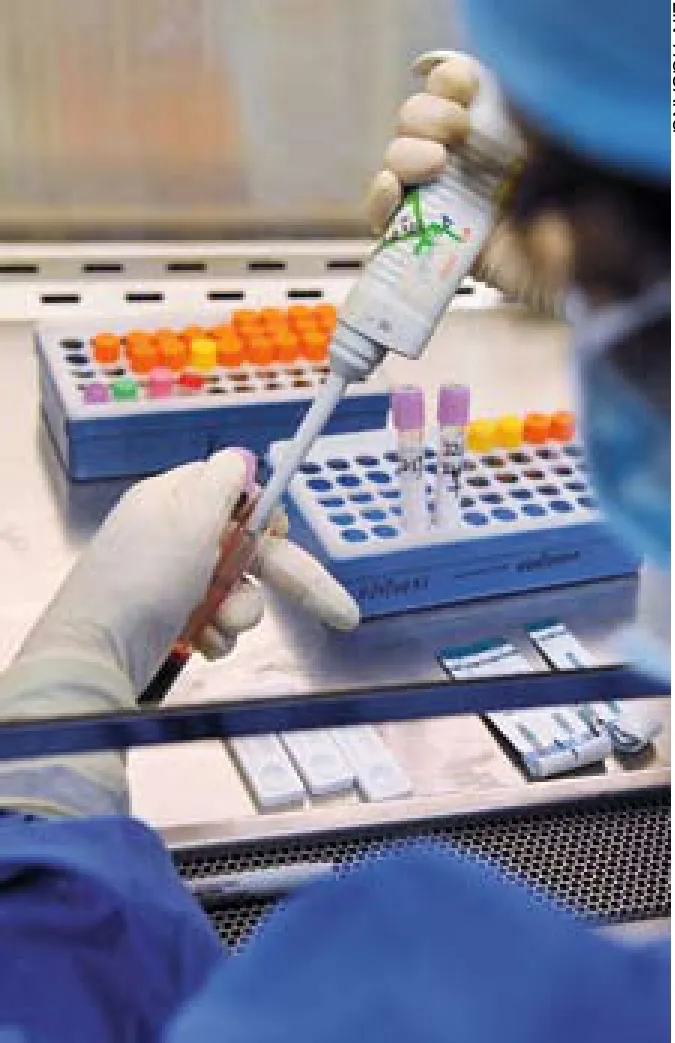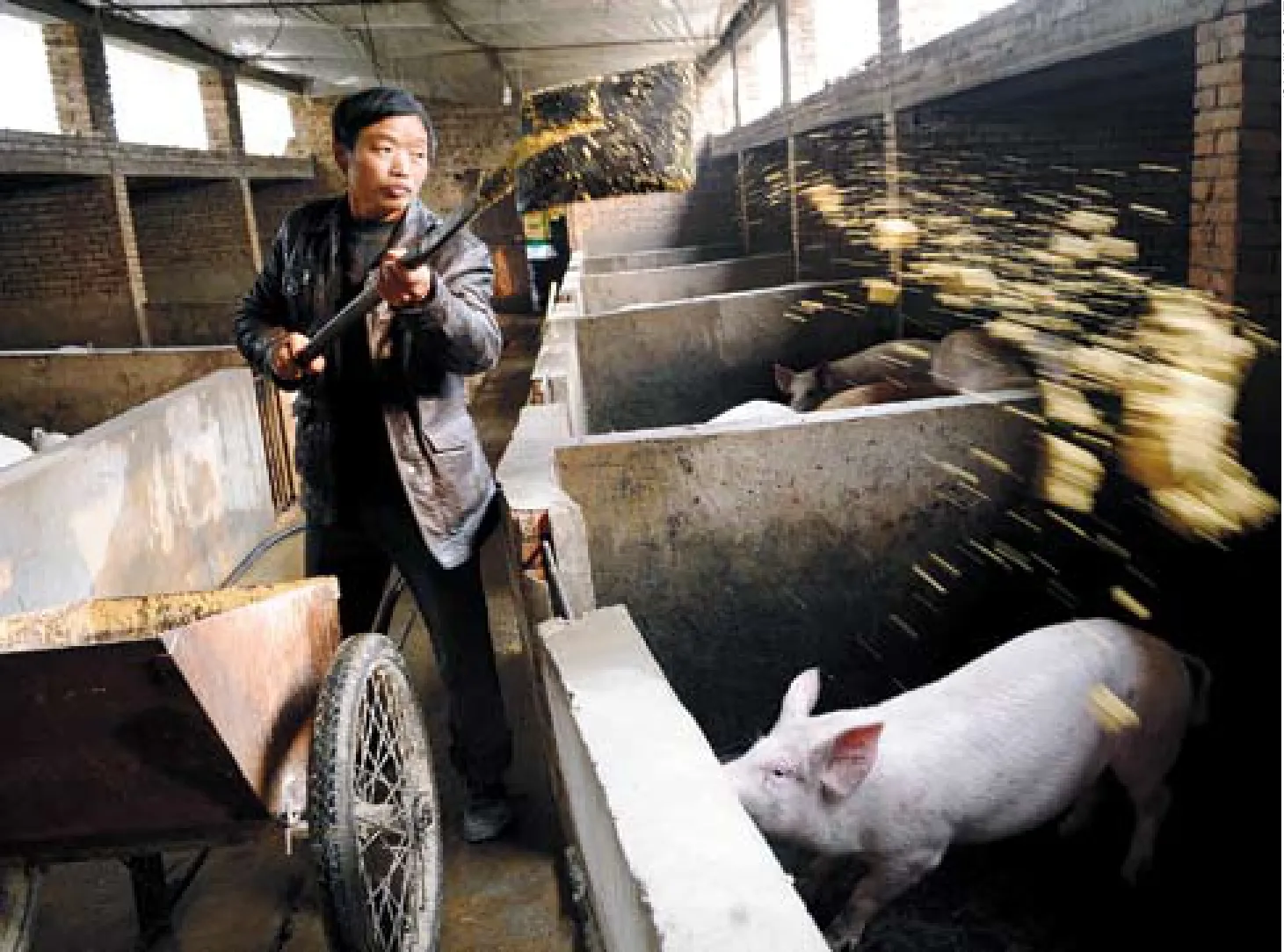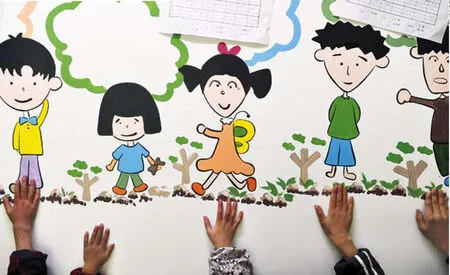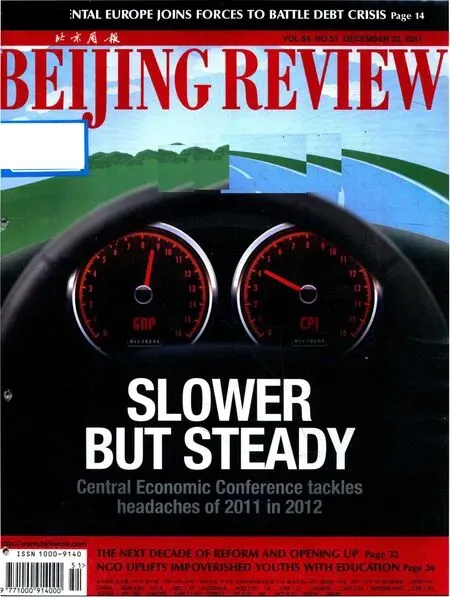A Goal of Zero
A Goal of Zero
As the picture of HIV/AIDS in China becomes more complex, more efforts are needed
The theme of World AIDS Day this year is “Getting to Zero,” which means zero new HIV infections, zero discrimination and zero AIDS-related deaths.
Realizing these goals, however, is an extremely diffcult challenge. Three decades after the first case of HIV was reported in the world in 1981, poor awareness and inadequate medical responses have allowed the virus to continue to spread worldwide.
In the frst 11 months of this year, 48,000 new cases of HIV infection and 28,000 AIDS-related deaths were reported across China, according to a statement released by the Ministry of Health (MOH).
About 88,000 people in China had died from AIDS since 1985, when the country reported its frst case, the statement said.
In order to contain HIV/AIDS, the Chinese Government has set ambitious targets to reduce AIDS-related deaths by 30 percent and new infections by 25 percent by 2015.
A harsh reality
China currently has 346,000 registered HIV carriers and AIDS patients. But the number including unregistered people living with HIV/AIDS (PLWHA) is predicted to hit 780,000 by the end of this year, according to the MOH statement.
“Although the overall number of reported HIV/AIDS cases in China has been declining and the growth of registered PLWHA has slowed in recent years, some regions and some groups of people still display a much higher incidence of the disease,” said Minister of Health Chen Zhu.
Infection through sexual intercourse has become the main HIV/AIDS transmission mode in China. Of the 48,000 newly reported infections this year, 81.6 percent contracted the virus through sex, including more than 29 percent through homosexual acts. Statistics from the MOH show that the growth in the number of reported HIV/AIDS cases among homosexual men has risen from 22.8 percent in 2006 to 58.7 percent this year.
“Since sex has become the most common means of HIV/AIDS transmission, the campaign to curb the virus’ spread has taken on more complexity,” Chen said.
Offcial statistics also show an increasing number of older people and college students have become infected with HIV/AIDS through unsafe sexual intercourse in recent years.
Figures revealed by the Chinese Center for Disease Control and Prevention (CCDC) on November 30 show that the number of HIV-positive men in their 60s and above soared from 483 in 2005 to 3,031 in 2010, accounting for 8.9 percent of the total population of PLWHA, up from 2.2 percent in 2005.
According to a survey conducted earlier this year among 158 HIV-positive men in southwest China’s Yunnan Province, aged 50 and above, two thirds of the respondents admitted to having paid for sex and never using a condom.
“To some extent, however, the increasing number of elderly people testing positive for HIV should be attributed to broader and better testing efforts,” said Lu Lin, Director of the Yunnan Provincial Center for Disease Control and Prevention.
By the end of October, Yunnan had reported 93,567 HIV carriers and AIDS patients, the highest figure among all China’s provinces, municipalities and autonomous regions. Men in their 60s and above accounted for 8.3 percent of newly reported cases in the province this year, 2.1 percentage points higher than in 2010.
Although tackling the spread of HIV/ AIDS among the elderly is a pressing issue, the stigma associated with the disease remains a major obstacle for such initiatives.
“Many older PLWHA refuse treatment,”said Kang Jun, Director of the HIV/AIDS Prevention and Control Offce of Yunnan’s Xishuangbanna Dai Autonomous Prefecture.
Their primary concern is that if they receive treatment, their situation will be made public, and they will therefore “lose face,”according to Kang. Despite years of antidiscrimination campaigns in China, HIV/ AIDS is still deemed as disgraceful by many people and often PLWHA themselves feel ashamed of their situation.
“Another justifcation for refusing treatment given by some older PLWHA is that they are already old and don’t have much time to live anyway,” Kang said. “Sometimes doctors who try to contact older PLWHA fnd themselves being dismissed, rejected or even threatened. They would rather die and hold on to the secret forever. In some extreme cases, patients tell us that if their situation were to be exposed to others, they would choose to commit suicide.”
Lu believes that the only way to effectively prevent the spread of HIV/AIDS among the elderly is to promote the use of condoms. “You can hardly keep all of them away from sex,” he said.
In addition to a growing number of older PLWHA, a rise in the rate of infection among male college students, aged between 20 and 24, has been especially obvious in the past two years, with 56 percent contracting the virus via gay sex, according to the CCDC. Between January and October this year, 1,252 HIV/AIDS cases were detected among college students in medical tests.

ZHOU ENGE

LIN YIGUANG
“The distribution of HIV/AIDS cases in China is wider and more scattered than ever before, posing great difficulties for prevention and control efforts,” said Wu Zunyou, Director of the CCDC’s HIV/AIDS Prevention and Control Center, adding that more cases were discovered unexpectedly during routine hospital checks.
Vulnerable areas
According to MOH statistics, ethnic minorities, which account for 8.5 percent of China’s total population of 1.3 billion, also often display a high incidence of HIV/AIDS.
In Yunnan and neighboring Guangxi Zhuang Autonomous Region, which are home to dozens of ethnic minorities, HIV/ AIDS has become a major threat to public health due to drug abuse and cross-border marriages with citizens from countries with a higher prevalence of HIV/AIDS.
“It is estimated at least 25,000 people in Yunnan, which borders Myanmar, Viet Nam and Laos, are in cross-border marriages, of which HIV carriers and AIDS patients account for 2 percent,” said Xu Heping, Director of the Yunnan Provincial Bureau of HIV/AIDS Prevention and Control.
“Because as many as 95 percent of those people are in de facto marriages, or marriages that are not legally registered, it is extremely difficult to offer HIV/AIDS prevention and control services to them,” Xu said.
In January, authorities of Ruili City in Yunnan, which borders Myanmar, began providing pre-marriage HIV/AIDS testing, and free anti-viral treatment in hopes of preventing mother-to-child HIV transmission in cases where pregnant women are found to be HIV-positive.
“In Yili Kazakh Prefecture in Xinjiang Uygur Autonomous Region, as well as Ruili and Longchuan County in Yunnan, the HIV infection rate stands at above 1 percent, which is much higher than the country’s average, 0.06 percent,” said Minister Chen.
Officials and economists warn that the spread of HIV/AIDS in ethnic minority regions, which are often poorer than other parts of China, will slow down their development.
Sparing no efforts
Despite the severe situation, China has made progress in terms of curbing new HIV infections, expanding testing and treatment coverage, and reducing HIV-related deaths.
Newly increased HIV infection cases in China fell from 70,000 in 2005 to around 48,000 this year, according to statistics from the MOH.
Financial support from both central and local governments for HIV/AIDS programs had risen from 1.46 billion yuan ($213.76 million) in 2006 to 3.06 billion yuan ($448.02 million) in 2010.
The Joint UN Programme on HIV/AIDS (UNAIDS) said that China had reported a 60-percent reduction in AIDS-related deaths over the past eight years.
Premier Wen Jiabao on December 1 pledged new measures to help PLWHA obtain affordable drug treatment, enjoy fair job and education opportunities and avoid discrimination.
He said the Chinese Government had decided to roll out special medical aid next year in regions with high HIV/AIDS prevalence to help ease the heavy fnancial burdens on PLWHA.
“Detailed measures are being drafted by relevant departments,” Wen said, adding that some antiretroviral drugs will be included in the country’s essential drug system, which means their prices will be controlled and their consumption will be covered by the basic health insurance.
The premier also said that the government would increase fnancial aid to families impoverished by HIV/AIDS. Measures will include raising allowances and providing subsidized housing to shelter homeless PLWHA.
The government is also working on measures to help children orphaned by HIV/ AIDS, to ensure a basic standard of living, equal education opportunities and access to medical treatment.
In addition to more spending on treatment, China will also expand its HIV/AIDS prevention and control network, beginning with “effective intervention measures” for 90 percent of high-risk communities.
“In five years, counseling and testing services should be available at all hospitals operating at the county-level and above. In regions with a high prevalence of HIV/ AIDS, these services would also be available at grassroots clinics,” said Vice Premier Li Keqiang at a plenary meeting of the State Council AIDS Working Committee on November 18.
To achieve the target, the government will provide HIV/AIDS NGOs with fnancial and other kinds of support to give full play to their role in anti-HIV/AIDS efforts, particularly HIV/AIDS awareness education and intervention.
In the process of establishing a mechanism to involve social forces in HIV/AIDS prevention and control, Li called on health authorities at all levels to keep close contact with HIV/AIDS NGOs and provide assistance to these organizations and their volunteers.
That was the highest-level commitment made so far by the Chinese Government in support of HIV/AIDS NGOs.
Currently, such organizations work with money mainly from overseas, said CCDC’s Wu.
“The Central Government is making arrangements to change that situation, as the role of NGOs, especially in reaching out to PLWHA, has been recognized,” he said.
According to Thomas Cai, Director of AIDS Care China, an NGO based in Guangzhou, Guangdong Province, trial projects carried out last year in Wuhan and Xiangyang cities in central China’s Hubei Province showed that the involvement of NGOs helped detect more PLWHA among the local population of men having sex with men (MSM), with a verified incidence rate of 7.8 percent compared with the previous 4 percent.
Minister Chen has also admitted that the detection of more than half of HIV-positive MSM on the Chinese mainland involved efforts from NGOs.
Combating discrimination
In his speech on November 18, Vice Premier Li said that more assistance should be provided for PLWHA, and their rights and interests should be better protected. He called on society as a whole to root out discrimination against PLWHA.
“The discrimination largely comes from the fear of contracting HIV/AIDS and the ignorance about the causes of disease,” said Yu Fangqiang, founder of Tianxiagong, an HIV/ AIDS NGO in Nanjing, east China’s Jiangsu Province.
On December 29, a petition signed by more than 12,000 people was sent to the MOH and the Ministry of Human Resources and Social Security, calling for equal rights for HIV-positive job seekers.
The petition, called One Photo for Each, Smiling to Support Equal Working Rights for HIV Carriers, was initiated by Tianxiagong. Those who signed up to the petition took photos of themselves holding pieces of paper saying they are willing to work with HIV-positive people.
“We wanted to raise social awareness about giving HIV-positive job seekers equal opportunities through this campaign,” Yu said.

ZHU XIANG
UNAIDS got involved in the campaign at the end of September and also published photos on its micro-blog.
Yu and his colleagues have been engaged in safeguarding the rights of HIV-positive job seekers since 2010. The organization played a key role in initiating the frst lawsuit regarding discrimination against HIV-positive job seekers on the Chinese mainland in October 2010.
The plaintiff was a 23-year-old HIV-positive man, who was denied a teaching job by the Education Bureau of Anqing City in east China’s Anhui Province in August 2010, after passing written exams and interviews. He was rejected on the basis that civil servants must pass a medical exam.
The court ruled against him one month after the case was frst heard.
“The case was a landmark for HIV-positive job seekers,” Yu said. “Since it was fled, another two HIV carriers in Guizhou and Sichuan provinces also took legal actions on the grounds of discrimination by employers. But their cases soon fell out of the public eye.”
According to the 2006 Regulations on HIV/AIDS Prevention and Treatment, PLWHA, as well as their families, have the right to medical treatment, education, employment and marriage licenses. However, many organizations in China still regard HIV-positive people as physically unqualifed for jobs.
Comparatively, the problem of discrimination is even more severe when it comes to medical treatment.
HIV carriers and AIDS patients face medical discrimination and are frequently referred to specialized hospitals for infectious diseases after being denied treatment at general hospitals, according to a study released by the International Labor Organization (ILO) and China’s National Center for AIDS and Sexually Transmitted Diseases Control and Prevention on May 17.
The study was based on interviews with 103 PLWHA and 23 healthcare workers. Another survey by the center found 12.1 percent of the HIV-positive respondents had experienced denial of medical treatment at least once.
“Stigma and discrimination in the healthcare system largely stemming from low awareness is potentially more deadly than AIDS itself,” said Ann Herbert, Director of the ILO Offce for China and Mongolia.

LIU JUNXI
Meng Lin, Coordinator of the Secretariat of the Chinese Alliance for PLWHA, said denial of surgery was one of the most pressing issues facing PLWHA. In some cases, PLWHA were even denied medical treatment for simple procedures such as hemorrhoids and the cleaning and stitching of wounds.
“The existence of designated infectious disease hospitals becomes a convenient excuse for general hospitals to turn PLWHA away,”said Meng, who added that “unnecessary”HIV/AIDS testing before surgery had left many sufferers feeling exposed and reduced their chances of getting proper medical services.
Due to the lack of comprehensive treatment facilities, most infectious disease hospitals in China cannot provide comprehensive medical services, especially major operations.
“Almost 80 percent of designated hospitals surveyed can only deal with HIV/AIDS symptoms. They are unable to deal with other diseases, even simple conditions such as appendicitis. As a result, many patients’conditions worsen due to a lack of effective treatment,” Meng said
Zhang Ke, Deputy Director of the Infectious Disease Department of Beijing Youan Hospital, a designated HIV/AIDS hospital, said that many people are misinformed about designated hospitals.
“As far as I know, many doctors have the idea that only designated hospitals are responsible for the treatment of PLWHA,”Zhang said. “In fact, we are not general practitioners. We can help patients with their HIV/AIDS symptoms, but not with problems related to their eyes, teeth and bones.”
According to Zhang, sometimes he or his colleagues have to invite doctors in general hospitals to perform surgery on PLWHA. But some doctors in other hospitals are reluctant to help.
According to media reports, the possibility of HIV infection through even the close contact required by surgery can be reduced to 4 in 100,000 after going through emergency treatment within the frst four hours of contact and using antiretroviral drugs in the following three weeks.
Meng called on relevant authorities to develop precautionary measures for doctors treating PLWHA and to establish a compensation system for possible infection accidents.
In fact, the Chinese Government has already identifed access to medical services by PLWHA as an area requiring greater intervention efforts.
The country’s Regulations on HIV/AIDS Prevention and Treatment clearly state that medical institutions should not turn away patients with HIV/AIDS or refuse treatment on the grounds that a patient is infected.
In December 2010, the State Council issued a notice, announcing more detailed measures to eliminate discrimination and protect the legitimate rights and interests of PLWHA in accessing health services.

